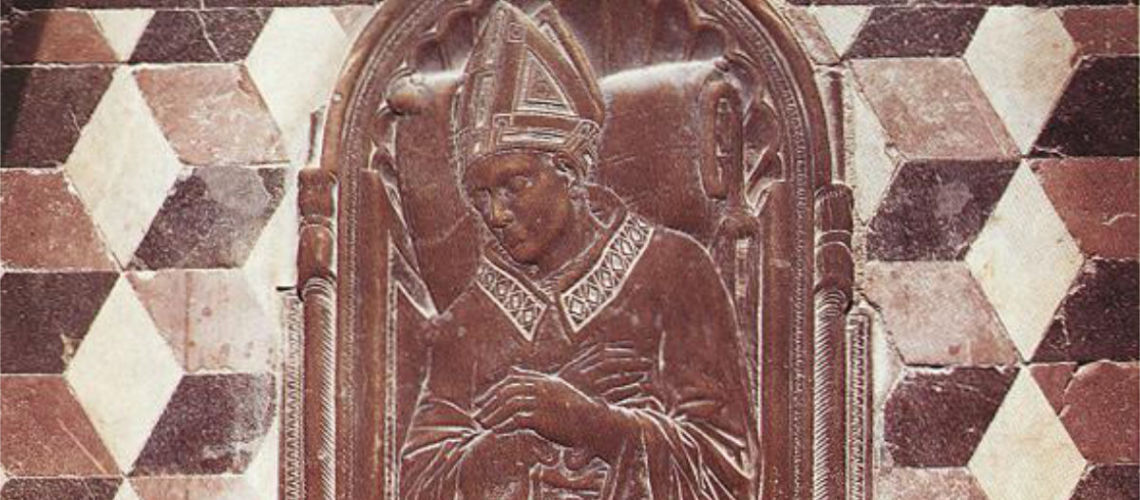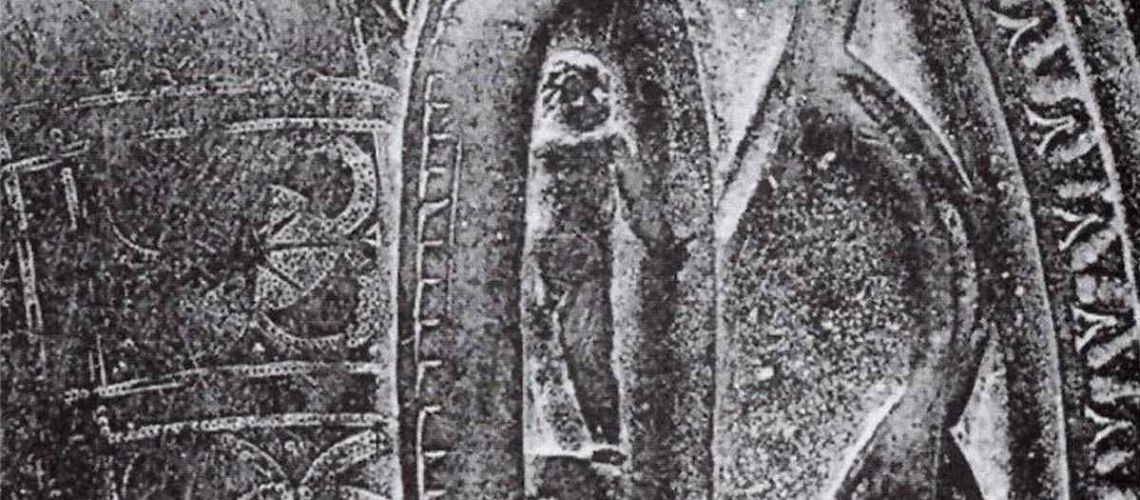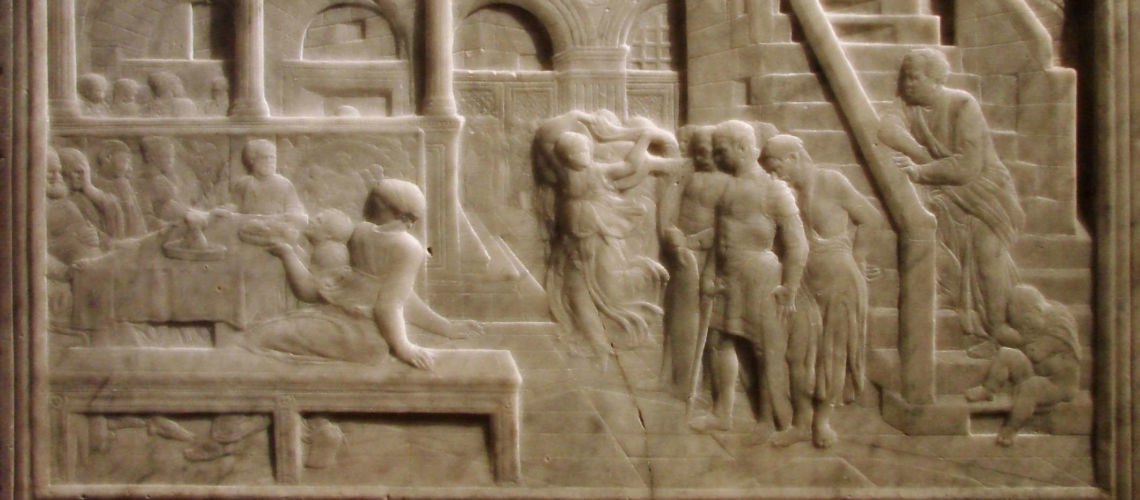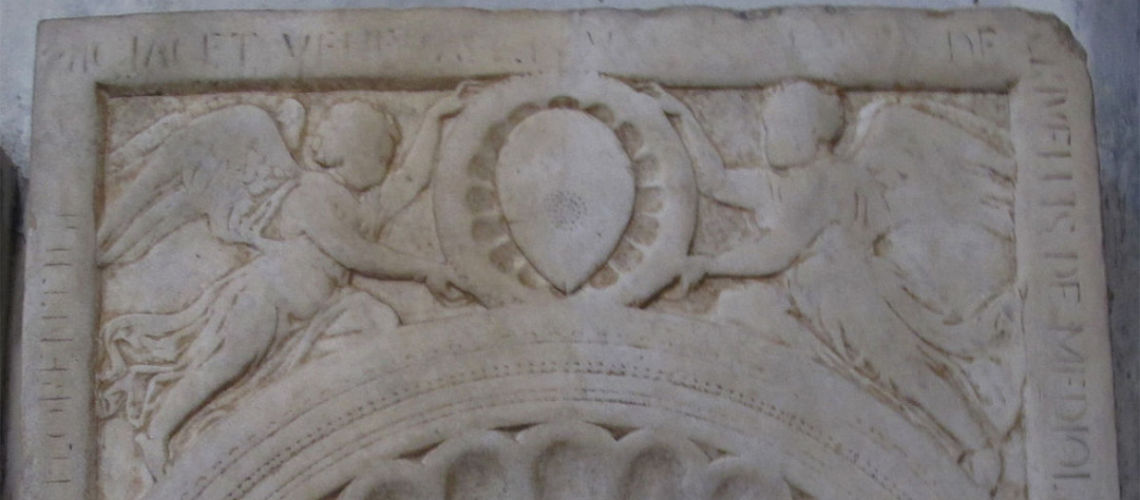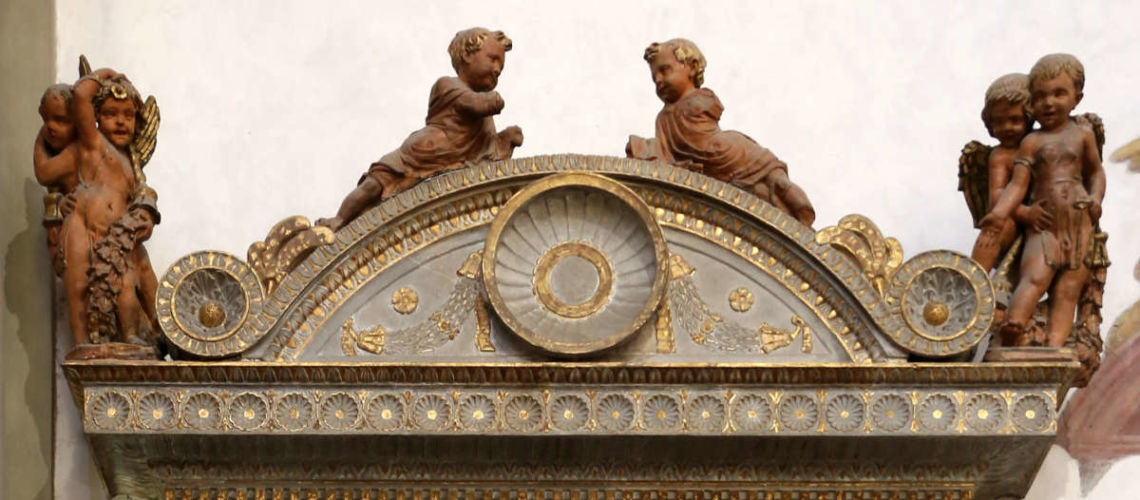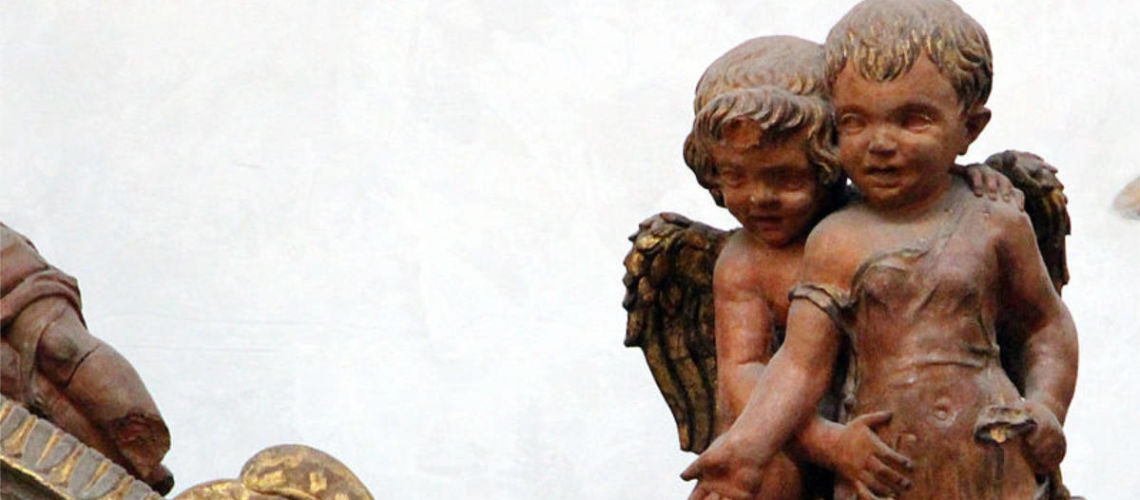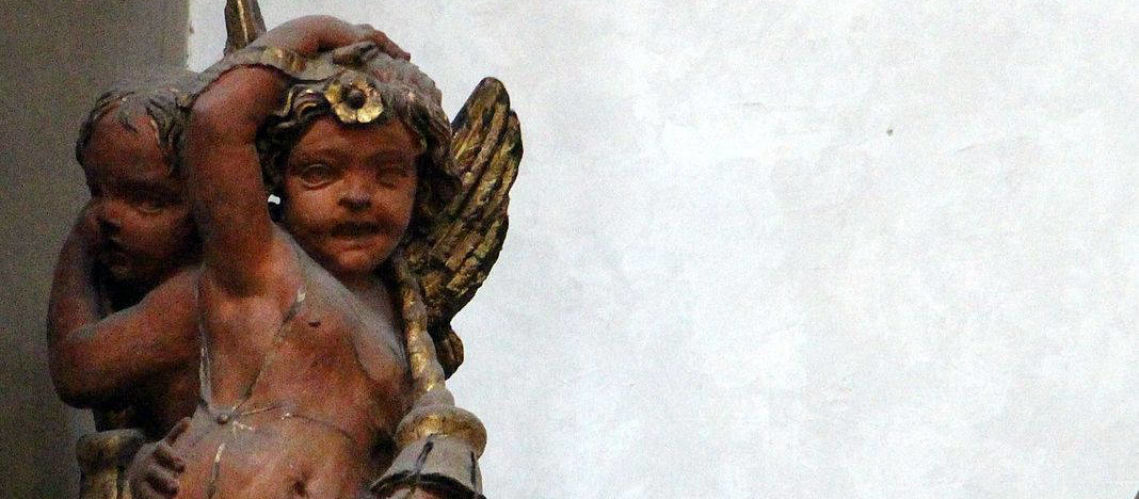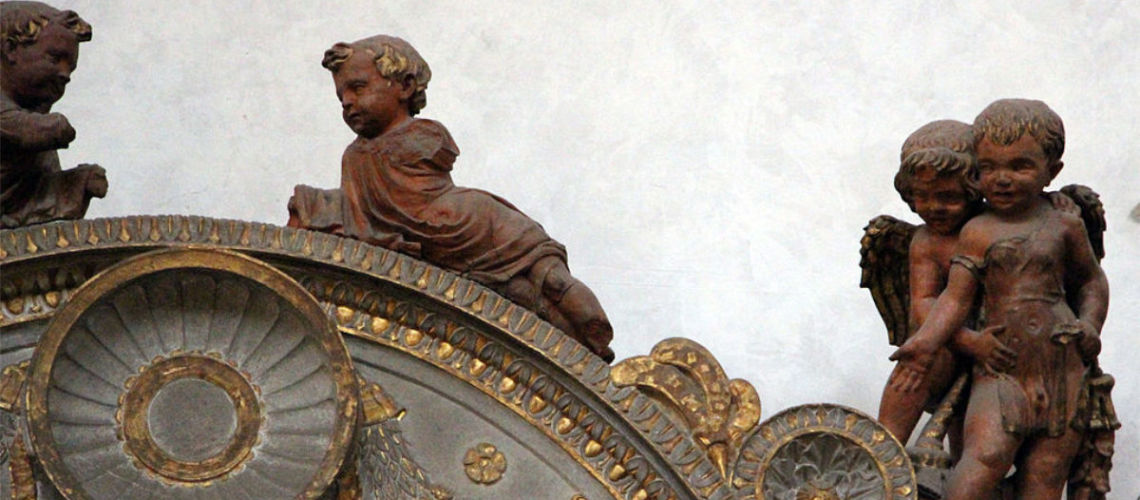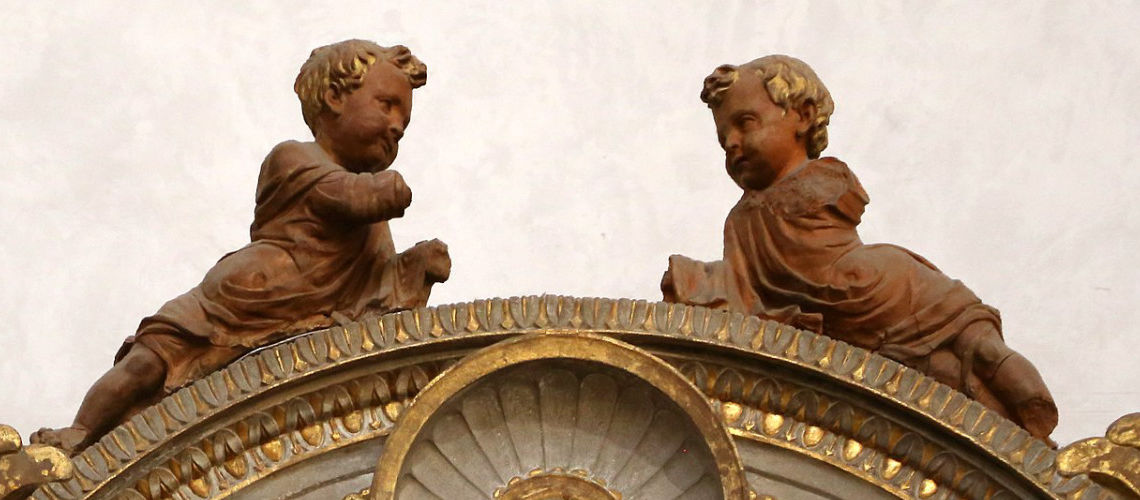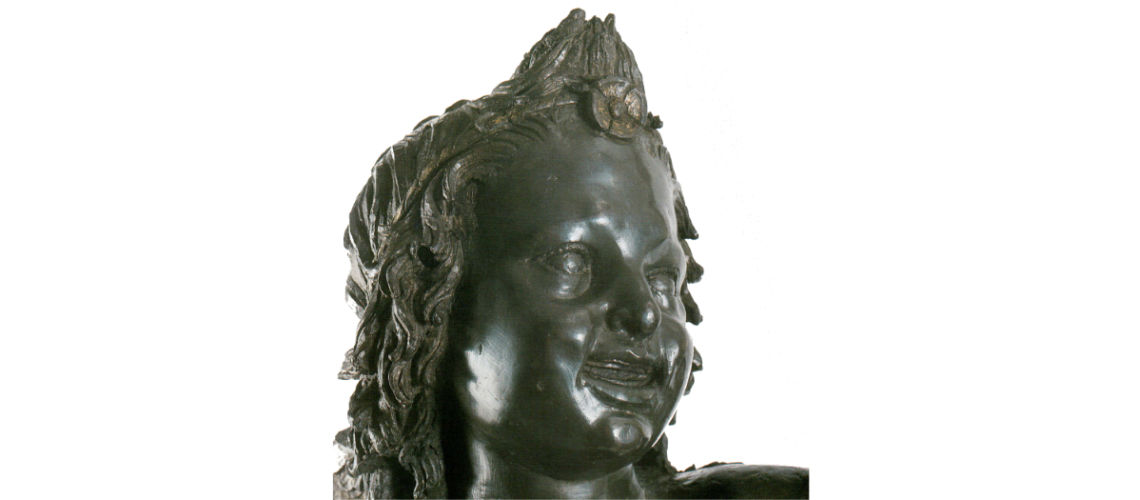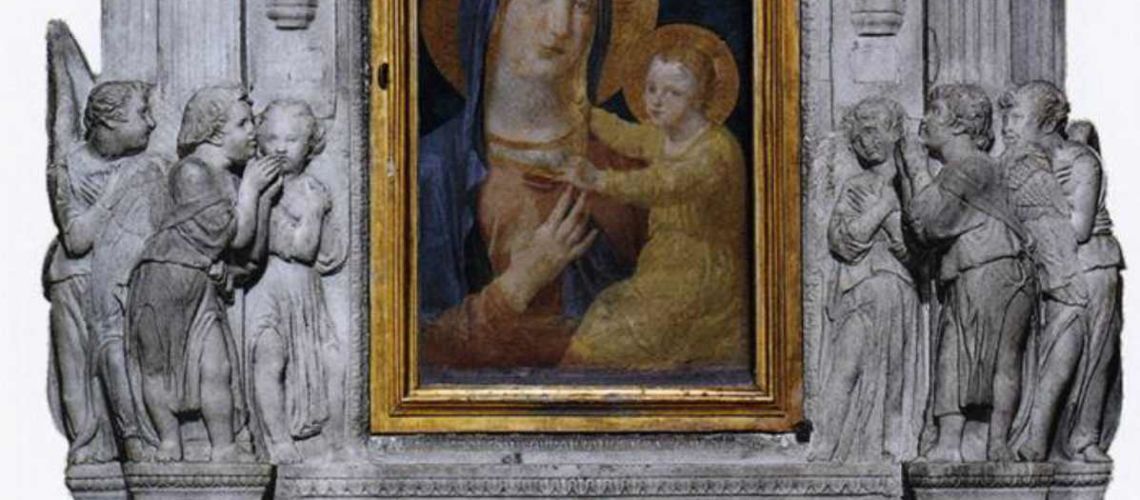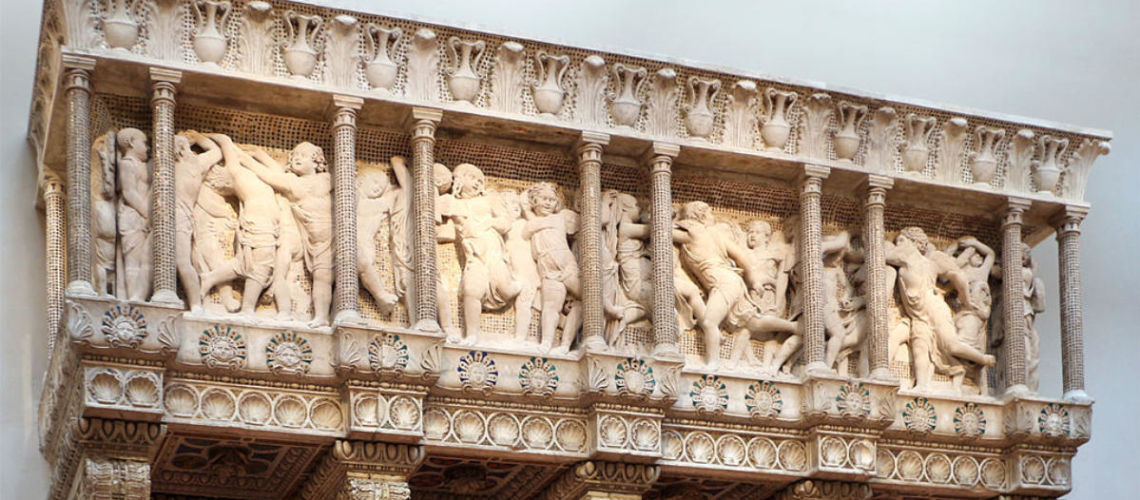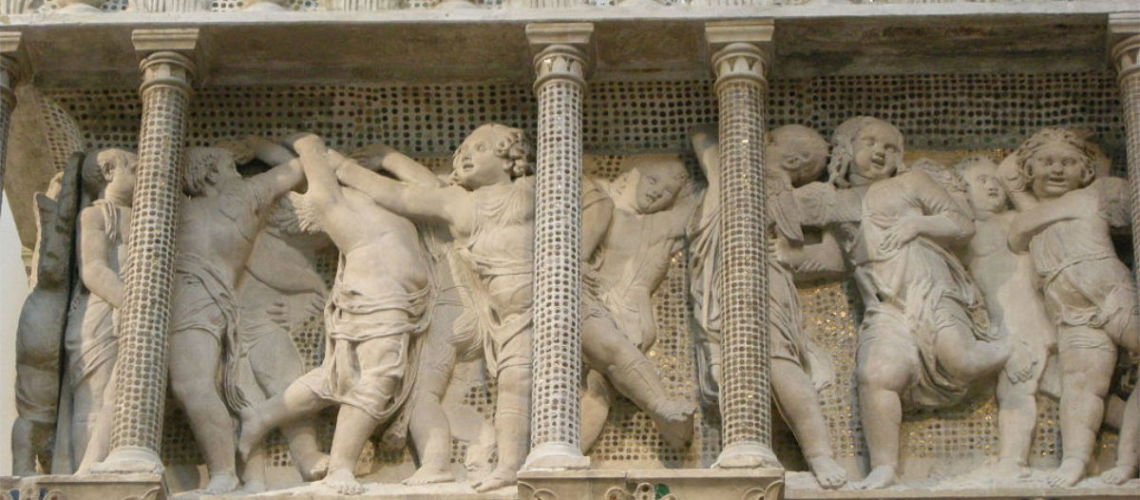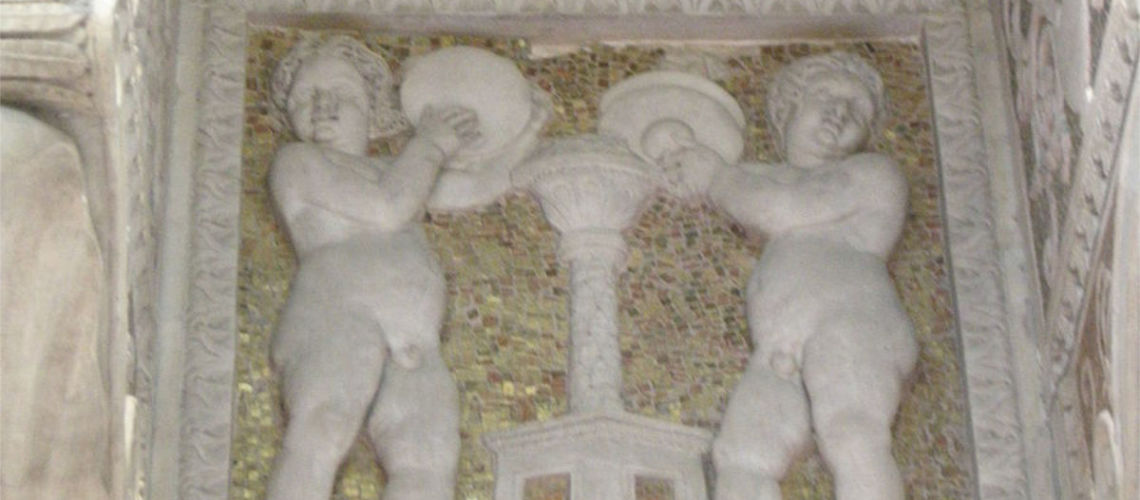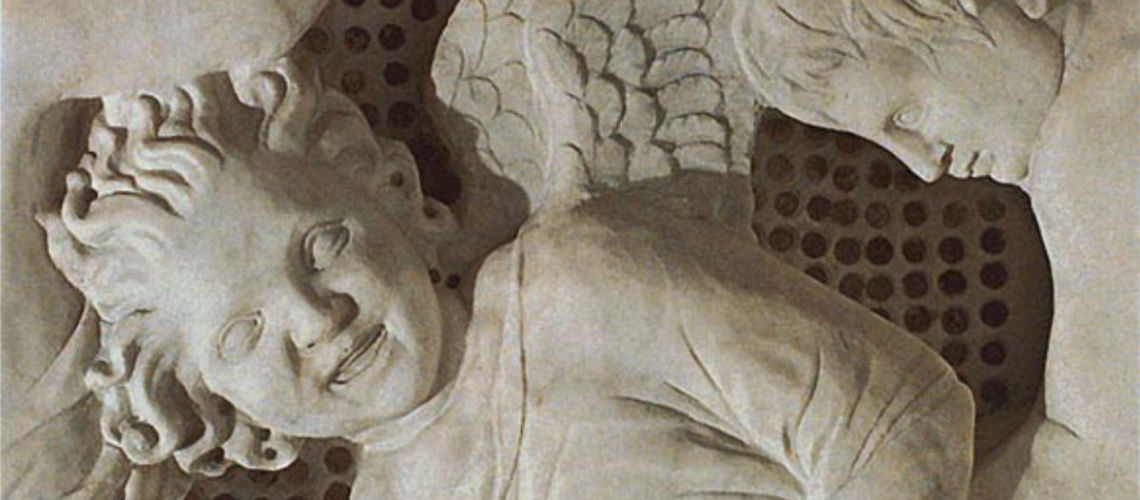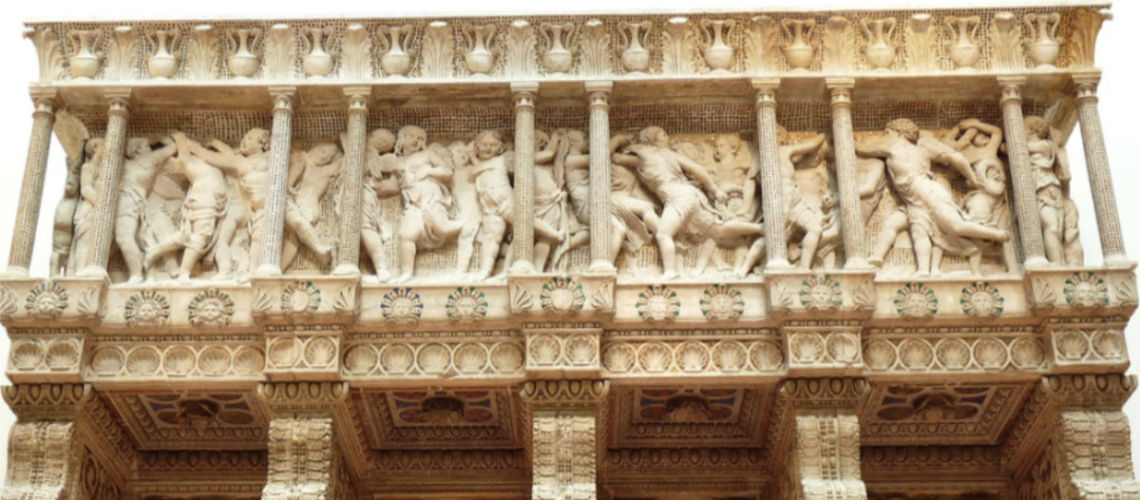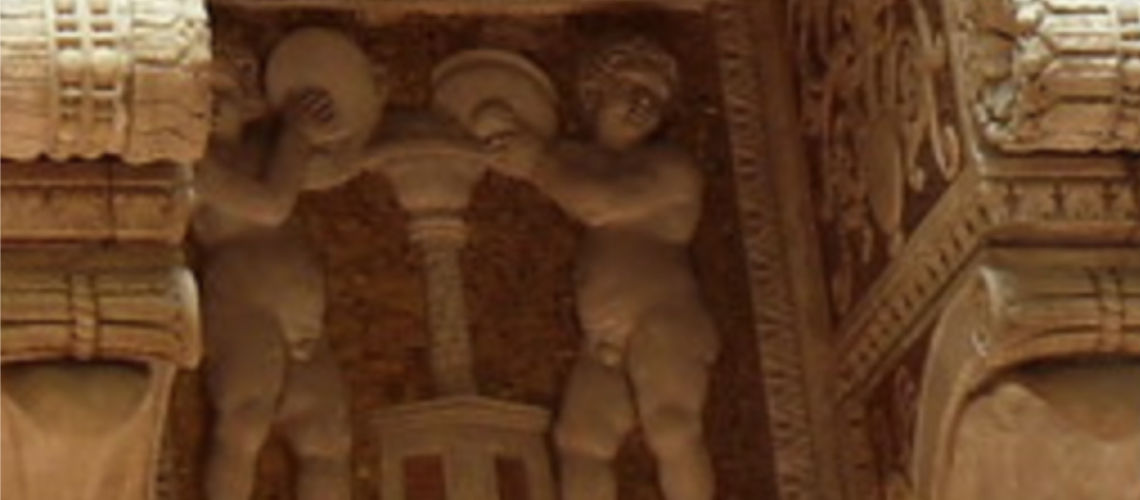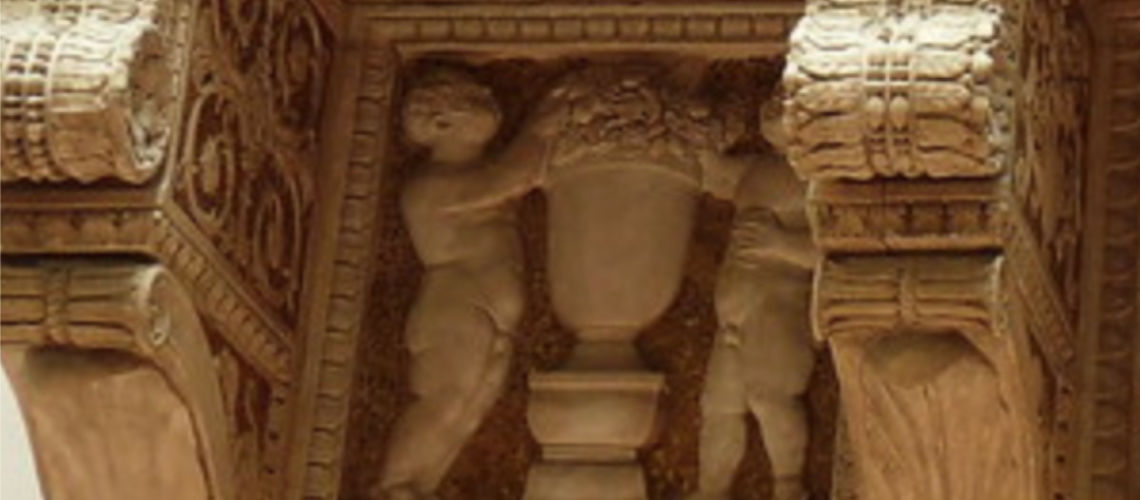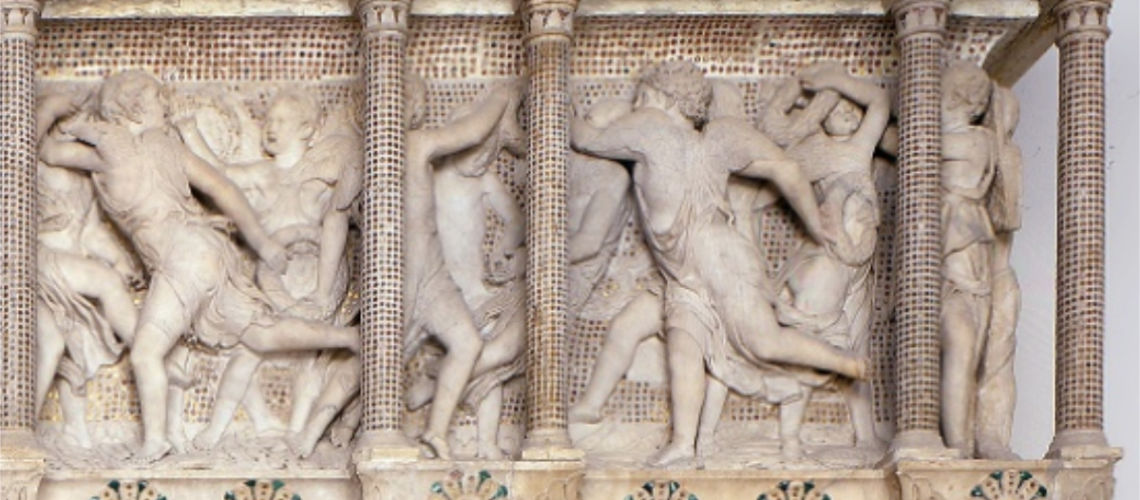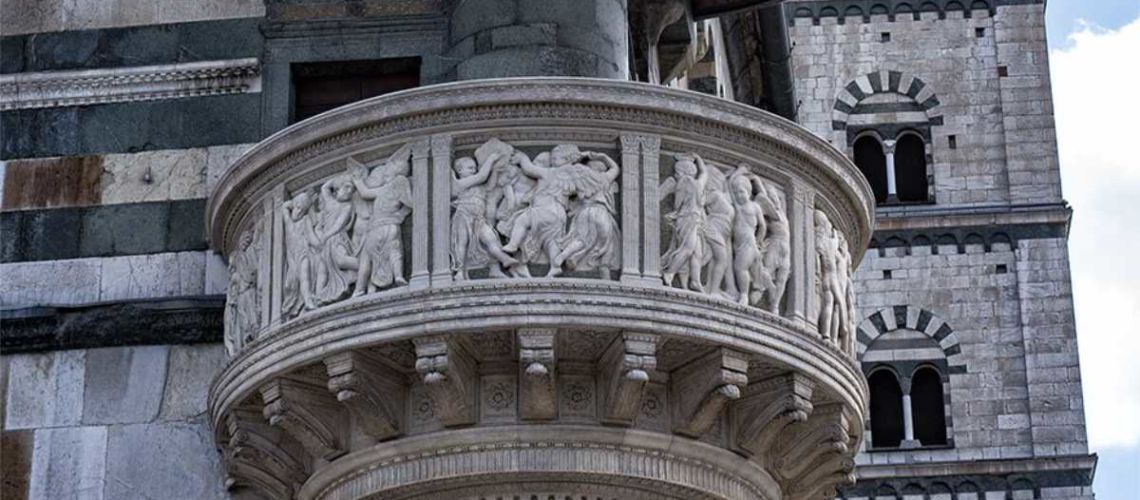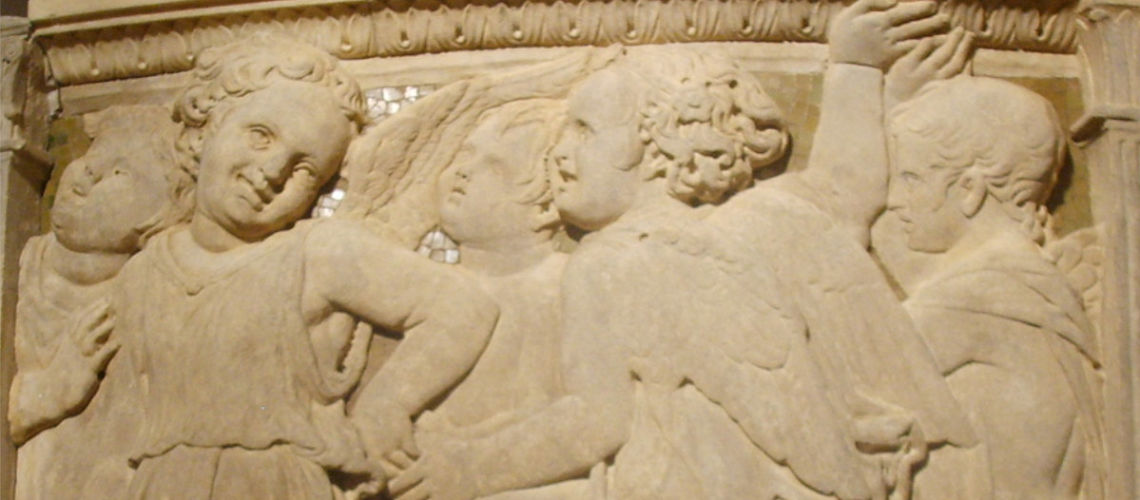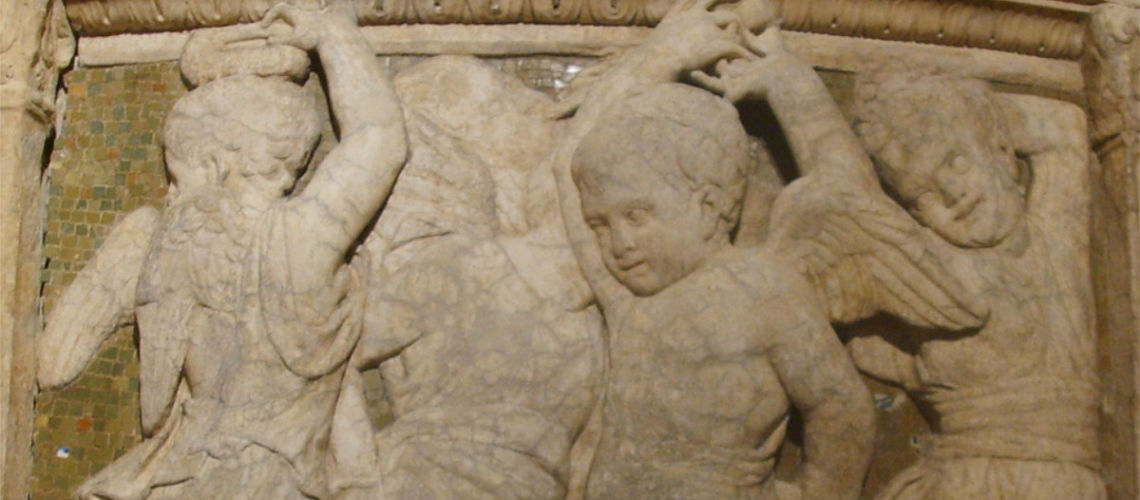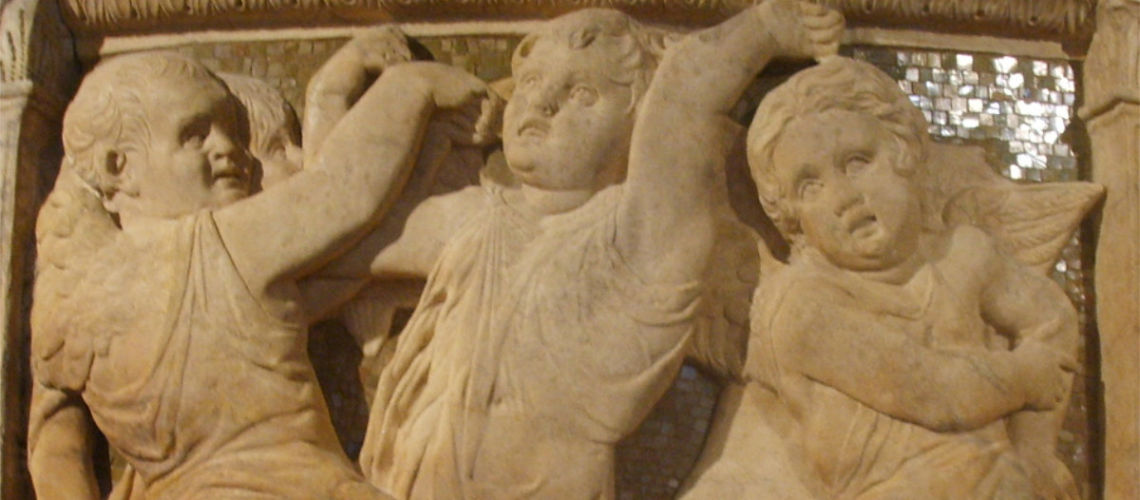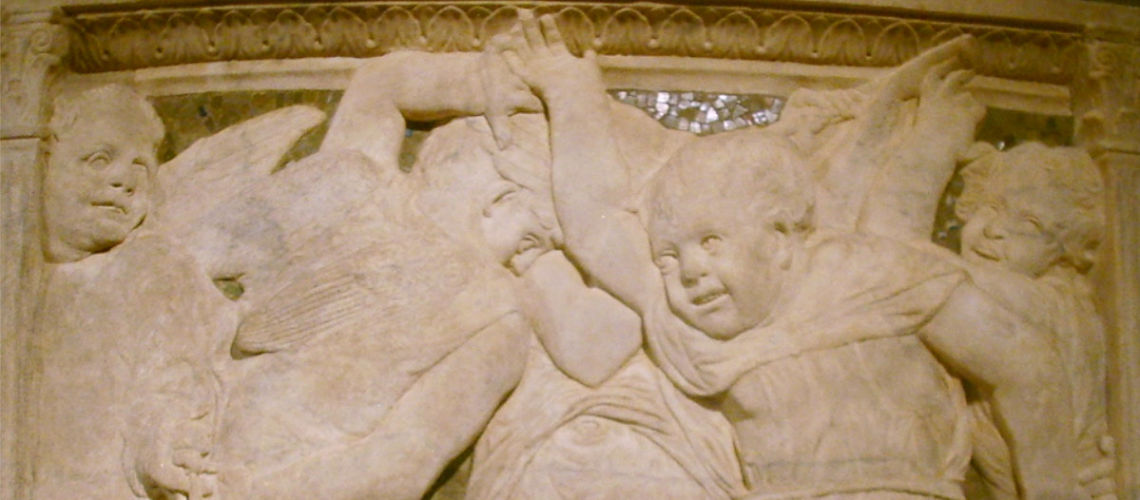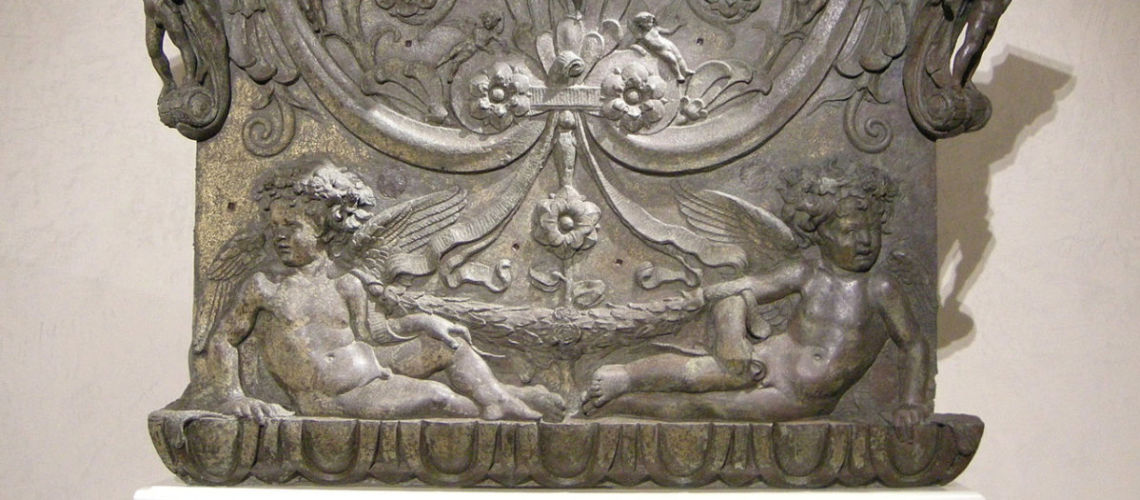Donatello and the putto in the sculpture
Part IV
The desire and pleasure that Donatello has in creating the putti makes him sculpt them them at the base of the tomb of the bishop of Grosseto Giovanni Pecci in the cathedral of Siena (1426). They are carved at the bottom, foreshortened, covered by the large parchment than they hold up. The heads and arms can be seen.
But they were not enough, and then he put a half-hidden putto even inside the spiral of the bishop’s pastoral staff.
In each successive work Donatello does not renounce to the putti, as if they were now his signature: in the Festino di Erode (c. 1435), a marble bas-relief at the Musee Wicar in Lille, a half-naked child-putto is half sleeping on the stairs,
in the tomb of Giovanni Crivelli of 1432, in the church of Santa Maria Aracoeli in Rome, two half-dressed flying putti hold the family crest as if to replace the winged victories of the Roman monuments,
In the first half of the 1930s Donatello sculpted the Annunciazione Cavalcanti in gray lime stone “pietra serena” highlighted with gold, still in the church of S. Croce in Florence, where the Cavalcanti family had its own chapel (Ginevra Cavalcanti was the wife of Lorenzo dei Medici the Elder, brother of Cosimo de’ Medici the Elder). In addition to the interesting faces that appear in pairs on the two capitals of the side pillars, Donatello has modeled and placed on the top 6 winged and half-naked terracotta putti, highlighted with gold. The expressions of the side couples are playful, slightly frightened, surprised by the miracle that happens under their feet. They are external spectators who are not part of the composition. They also recall the Baby Jesus who is being born in that moment in Mary’s womb. It is the first time that putti appear in the scene of the Annunciation, making the miracle of conception, thanks to the Holy Spirit, more domestic.
The thread in the hair that holds a flower on the forehead of the left putto is an element will also be repeated in the bronze Attis (Mus. Del Bargello).
For the Basilica of San Peter in the Vatican, Donatello executed, in the thirtys of the ‘400, the great Tabernacle of the Eucharistic Sacrament (228 cm high), later used as a container for a painting of the “Madonna della Febbre” with the Child.
As far as he could he filled it with putti: on the top two winged putti hold open the curtain where a distorted bas-relief of the Deposition appears. On their sides, two other putti behind have the function of caryatids. On the top of the tabernacle two other putti are lying in a relaxed pose. On either side of the painting, two groups of three putti each, made in high relief, observe what is contained in the tabernacle whispering between them. At the bottom, on the base, four putti in bas-relief hold the symbol of the passion of Christ and two other side semi-wheels. All the putti are winged, dressed in classic fashion; Donatello gave those facing the tabernacle freshness and a sense of childhood, of play, of wonder. The Donatellian putti, who take the place of the angels, always defuse the sacred scenes they attend, attenuating their hieratic quality and making them domestic.
A change occurs with the creation of that very particular artifact that is one of the two Cantorie of the Duomo of Florence (Opera del Duomo Museum in Florence), completed in 1439. In this particular monument the winged putti are not accessories or decorations of other works, but are the work itself, the only protagonists that create the work. More than twenty-five putti move in a wild round dance, with almost Dionysian movements, and even the facial expressions confirm this feeling. In this they differ from the putti of ancient sculpture. Those on the right play with vegetable crowns, a symbol of Christianity’s victory over paganism. Donatello has created a continuum of putti without fragmenting the high reliefs in several panels, as in the case of the Cantoria by Luca della Robbia (in the same Museum), and has placed this unique long panel behind a series of five paired columns that somehow divide it, but which give also a new sense of space and depth compared to classic high reliefs. In the left and right-hand panels between the four shelves Donatello places heraldic specular putti playing cymbals and eating grapes from a vase. In the lower part of the Cantoria has created a strip with heads of putti between garlands.
In the same years in which Donatello performed the Cantoria, he also worked at the outside Pulpit of the Prato Cathedral. The contract with Michelozzo (for the architecture of the Pulpit) and Donatello (for the sculpture) was signed in 1428, and the artwork completed in 1438.
It consists of 7 curved marble panels with a golden mosaic as a background, in which the putti dance, as in the Cantoria and with the same bacchanal attitude.
A bronze capital asymmetrically supports the entire pulpit with a putto at the top that comes out with difficulty from under the weight it supports. At the bottom, two Bacchic putti lying with vine leaves and grapes in their hair are looking far away. In the center, among the volutes, five other little putti, in various positions. The capital was cast with lost wax technic in 1433, but was only installed in 1438. The model is by Donatello but it was certainly cast by Michelozzo, master founder.

